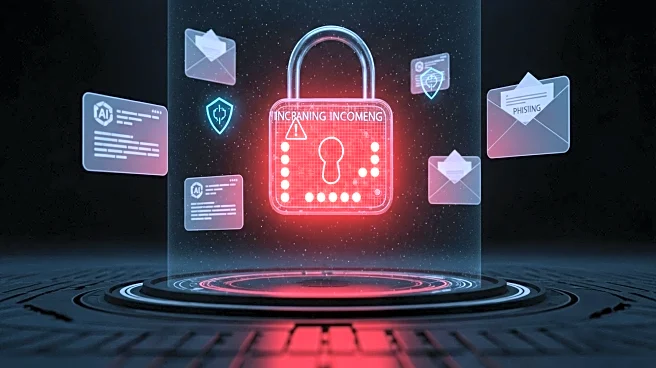What's Happening?
Resilience, a cyber risk solutions company, has released a report indicating a significant rise in the costs associated with ransomware attacks. The average cost of individual ransomware attacks increased by 17% in the first half of 2025 compared to the previous year. This trend is attributed to threat actors becoming more systematic in their targeting and exploitation of organizations. Ransomware attacks accounted for 76% of the incurred losses in Resilience's portfolio during this period, with social engineering tactics contributing to 60% of these losses. The report highlights the growing sophistication of cybercriminals, who are increasingly using impersonation schemes and carefully crafted phone calls rather than relying solely on advanced malware. Notably, the Scattered Spider cybercrime group has shifted its focus from retailers to insurance carriers, following incidents involving major companies like Erie Insurance and Aflac.
Why It's Important?
The rising costs and frequency of ransomware attacks have significant implications for the insurance industry and businesses across the U.S. As cybercriminals become more adept at exploiting vulnerabilities, companies face larger financial losses, making ransomware a top priority for risk management and insurance strategies. The increase in attack volume and the sophistication of tactics used by cybercriminals underscore the need for enhanced cybersecurity measures and insurance coverage. Businesses that fail to adapt to these evolving threats may incur substantial financial damage, affecting their operational stability and market competitiveness. The report's findings emphasize the importance of understanding the financial consequences of cyberattacks and identifying common points of failure to mitigate risks effectively.
What's Next?
Resilience's report suggests that companies must continue to evolve their cybersecurity strategies to keep pace with the changing tactics of cybercriminals. As attackers pivot to new weaknesses, businesses will need to invest in advanced security measures and employee training to prevent social engineering attacks. The insurance industry may also need to adjust its policies and coverage options to address the increasing costs associated with ransomware claims. Stakeholders, including cybersecurity experts and insurance providers, are likely to collaborate on developing more comprehensive solutions to protect against these threats. Additionally, ongoing monitoring and analysis of cybercrime trends will be crucial in anticipating future challenges and adapting strategies accordingly.











